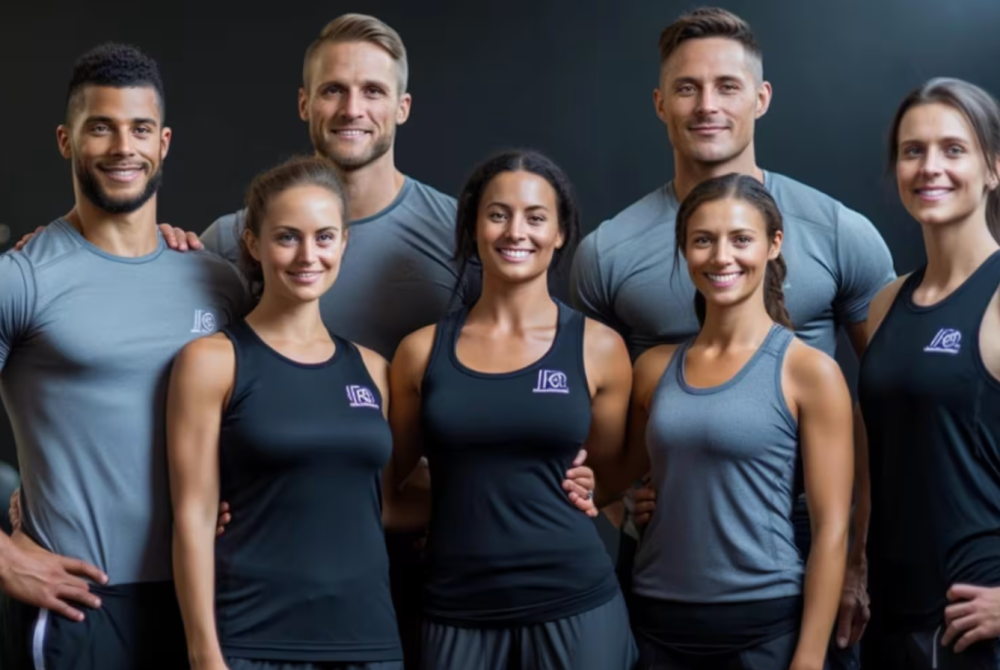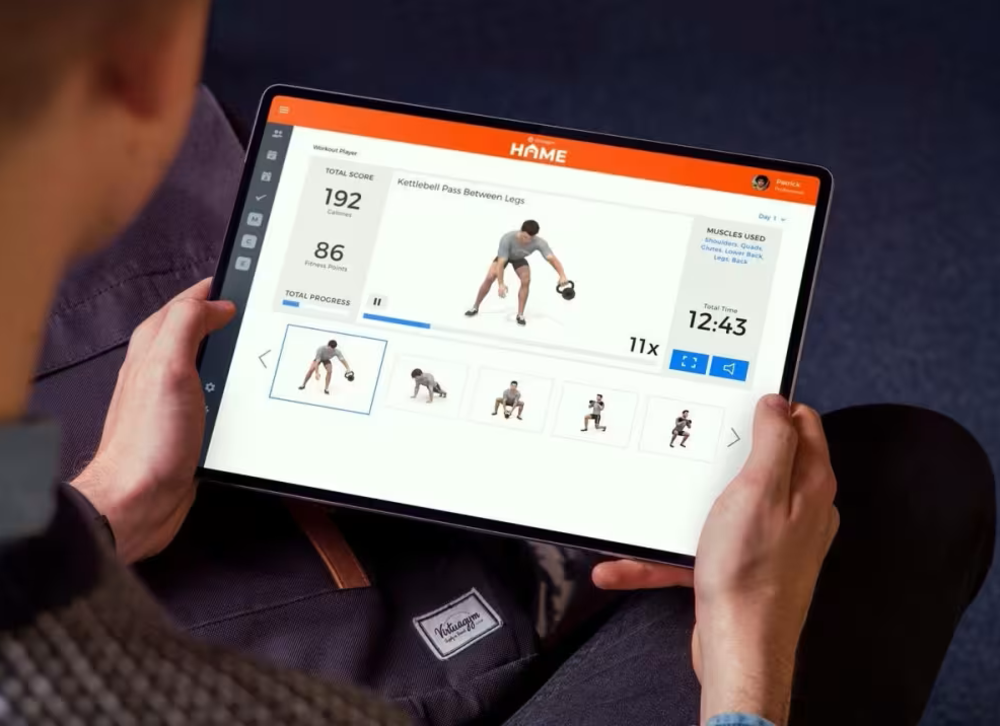Understanding the customer journey is crucial for any fitness studio looking to attract new members and keep them engaged. By mapping out this journey, gym or fitness studio owners can identify key touchpoints that influence a potential customer’s decision-making process.
This strategic approach not only enhances the customer experience but also maximizes business growth.
The importance of the customer journey map in the fitness industry

A customer journey map is a strategic tool that outlines the various touchpoints a client encounters while interacting with your fitness studio.
The customer journey refers to every experience a person has with your brand, from initial awareness to long-term loyalty. Creating this map allows you to understand customer needs, pain points, and expectations at each stage.
Understanding and optimizing the entire customer journey is essential for any fitness studio owner who wants to improve client satisfaction and business growth.
This map provides a clear visualization of the different stages a prospective client goes through before becoming a lifelong customer.
By mapping out this process, a business owner can identify opportunities to enhance the client experience, build credible relationships, and ensure long-term retention.
The customer journey consists of five key AIDA phases:
- Awareness. At this stage, prospective clients realize they need a fitness solution.
- Consideration. Clients start evaluating different fitness options, comparing your studio with competitors.
- Decision. This is the moment when prospective clients commit to joining your fitness studio.
- Engagement. Once they have signed up, providing exceptional service is critical.
- Loyalty or Advocacy. The final goal is to transform clients into loyal advocates for your business.
Each of these stages represents a crucial step in the client’s experience and requires specific strategies to optimize satisfaction and retention.
Let’s take a detailed look at them.
Step-by-Step breakdown of the customer journey map fitness
The customer journey consists of five key phases.
Each of these stages represents a crucial step in the client’s experience and requires specific strategies to optimize satisfaction and retention.
1. Awareness: identifying the need for fitness

The customer journey begins when a potential client recognizes their need for a fitness solution. This realization can be triggered by various factors, such as health concerns, lifestyle changes, or inspiration from social media conversations.
At this stage, your goal as a fitness business is to make your brand visible and accessible.
To capture attention, leverage digital marketing strategies , including content marketing and paid advertising.
Posting engaging content on platforms like Instagram and Facebook can help spark interest. Sharing success stories, testimonials, and workout tips through blog posts and videos will further position your fitness studio as a trusted source.
Another effective strategy is offering free personal training sessions. These sessions provide potential fitness studio (or gym) members with a hands-on experience, allowing them to understand the value of your services before making a commitment.

Practical Advice
A strong digital presence is key. Investing in targeted social media ads can help reach the right audience, while hosting community events or free workshops increases brand exposure.
SEO-optimized content ensures your website appears when potential clients search for fitness solutions. Collaborating with influencers or local businesses can also expand your reach.
2. Consideration: evaluating fitness options

Once potential clients recognize their fitness needs, they begin researching different solutions. This is when they compare different gym memberships, fitness programs, and personal training services.
They may explore your website, read online reviews, engage in social media conversations, and seek recommendations from friends or family.
At this stage, your fitness studio must stand out by highlighting its unique selling points.
Offering transparent pricing, clear descriptions of available programs, and showcasing your expert trainers can help prospects see why your facility is the best option. Free trials or discounted introductory packages can also make the decision-making process easier.
Participating in social media conversations is crucial here. Potential clients are likely discussing their fitness goals, seeking advice, or sharing their concerns online.

Practical Advice
Providing valuable content like blog posts, workout tips, and success stories showcases your expertise.
Highlighting testimonials and user-generated content builds credibility. Offering virtual tours or behind-the-scenes videos helps prospects feel more connected to your brand.
An FAQ section that answers common concerns about pricing, memberships, and class options can remove uncertainties. Offering free consultations or trial sessions can also be a deciding factor.
3. Decision: committing to a fitness studio

The decision stage is where potential clients take the final step in their buying process and commit to a gym membership. This is a critical moment that requires a seamless and encouraging onboarding process.
To ensure a smooth transition, simplify the sign-up process —whether online or in-person.
Offering incentives, such as a discount on the first month or free personal training sessions, can further motivate new members to finalize their decision.
Additionally, having responsive customer support can be a game-changer. If a prospect has any doubts or questions about memberships, pricing, or class schedules, providing prompt and helpful responses will increase the likelihood of conversion.

Practical Advice
A limited-time promotion or an exclusive discount can encourage sign-ups. A risk-free trial period allows prospects to experience your studio without long-term commitment.
Ensuring a seamless sign-up process prevents friction, and having a well-trained sales team helps address objections and highlight unique benefits. A well-designed onboarding process can significantly increase the chances of long-term retention.
4. Engagement: providing an exceptional experience

Once a client joins, your priority should be to deliver exceptional service that keeps them engaged and motivated.
A strong fitness community plays a vital role in member retention.
Encourage participation in group classes, workshops, and fitness challenges. Offering personalized training plans or progress-tracking tools can help gym members stay committed to their goals.
Additionally, maintaining communication through emails or social media updates can reinforce their connection to your studio. Creating exclusive perks for members, such as VIP access to events or specialized training sessions, enhances the overall experience.
This stage is crucial for fostering long-term commitment and ensuring that new clients do not abandon their fitness journey prematurely.

Practical Advice
Implementing personalized training plans or wellness tracking tools helps members stay motivated. Creating a strong sense of community through member-exclusive events, group challenges, or social media engagement increases commitment.
A loyalty or rewards program can incentivize continued participation, while ongoing check-ins and trainer support maintain motivation.
Regular feedback collection and service improvements will also show members that you value their experience.
5. Loyalty and advocacy: turning clients into brand ambassadors

Loyalty is built by consistently exceeding expectations. Satisfied members are more likely to renew their gym memberships, recommend your facility to others, and become active advocates of your brand.
Encouraging a referral system, such as an invite friend promotion where members receive benefits for bringing in new clients, can help expand your reach.
Recognizing and rewarding loyal members—whether through discounts, exclusive classes, or branded merchandise—can further strengthen their commitment.
Moreover, facilitating ongoing social media conversations where members can share their fitness progress, tag your studio, or leave positive reviews will help build an engaged community.
Happy gym members will naturally promote your studio within their networks, solidifying your reputation in the fitness industry

Practical Advice
A well-structured referral program rewards members for bringing in new clients. Encouraging members to share their fitness journeys on social media with branded hashtags increases visibility.
Actively requesting and showcasing positive reviews and testimonials builds credibility. Creating a member spotlight or appreciation program can also strengthen their connection with your brand.
Are you a personal trainer? Discover How to Create Best Personal Trainer Customer Journey
Analyzing and improving the customer journey
Understanding the customer journey

A well-structured customer journey is essential for attracting prospective members and converting them into loyal clients. Businesses must analyze every touchpoint to ensure a seamless experience for potential customers and improve overall engagement.
By optimizing the prospect funnel, companies can guide leads smoothly from awareness to long-term commitment.
Identifying challenges and opportunities

To enhance the customer journey, businesses need to identify friction points that hinder conversions.
One effective approach is conducting focus groups with existing clients and new members to gather insights on their experiences. These discussions help uncover customer expectations, highlight successful aspects of the journey, and pinpoint areas for improvement.
Additionally, tracking data such as website visits, sign-up rates, and customer inquiries can reveal weak points where potential customers may lose interest.
Strengthening value propositions

A strong set of value propositions is crucial for attracting prospective members. Businesses should highlight unique offerings, such as personalized training programs, expert coaching, or a supportive gym community, to differentiate themselves from competitors.
The key is to make every client feel valued throughout their journey.
Customized experiences, such as tailored fitness plans or special incentives for new members, can reinforce these value propositions. When customers feel valued, they are more likely to remain engaged and advocate for the brand.
Leveraging organic growth strategies

While paid marketing can be effective, businesses should also prioritize organic growth strategies. Encouraging word-of-mouth referrals, social media engagement, and strong community-building efforts can naturally attract potential customers. Happy members who feel valued will often recommend your services, driving sustainable expansion.
User-generated content, member testimonials, and social proof contribute to organic growth by building trust and credibility. Encouraging members to share their success stories and participate in discussions can further enhance brand visibility and attract more prospective members.
Continuous optimization and engagement
Improving the customer journey is an ongoing process that requires regular assessment and adaptation. Businesses should frequently gather feedback through focus groups, monitor customer satisfaction, and update their offerings to align with evolving expectations.
Optimizing internal processes and collaboration
The importance of personalized attention in the customer journey
Personalized attention throughout the entire customer journey is key to a fitness studio’s success.
Health clubs that engage members with tailored fitness plans and exclusive access to specialized sessions foster stronger relationships and improve retention.
Community events , such as fitness challenges and wellness workshops, enhance engagement and create a sense of belonging.
These efforts boost satisfaction and generate positive word-of-mouth referrals.
Leveraging technology to enhance the customer journey

In today’s fast-paced fitness industry, embracing technology is no longer optional—it’s essential for success. Incorporating digital solutions into your fitness studio internal processes can streamline operations and enhance the entire customer journey.
A robust platform, such as Virtuagym, allows business owners to optimize their fitness services efficiently while improving customer engagement.
From attracting prospective members to fostering long-term loyalty, technology plays a crucial role at every stage of the prospect funnel.
Let’s explore how a fitness business owner can harness technology at each stage of the customer journey to create a more engaging and efficient experience.
1. Awareness Stage
- Online Booking & Scheduling. Allow potential customers to easily book trial classes through an intuitive platform.
- Automated Marketing Campaigns. Use email and push notifications instead of local print to promote services and community events, driving organic growth.
2. Consideration Stage
- Interactive Workouts & Demos. Offer digital previews of classes to showcase your offerings and support fitness goals.
3. Decision Stage
- Seamless Onboarding & Sign-Up. Streamline registration with digital forms and contract management to enhance the prospect funnel.
- Payment & Subscription Management. Allow flexible membership options and automated billing for health clubs, making new members feel valued.
4. Engagement Stage
- Personalized Training & Coaching. Deliver customized fitness plans and nutrition tracking to support new members on their fitness journey.
- Gamification & Challenges. Keep gym members engaged with fitness challenges and reward systems that promote long-term commitment and success.
5. Advocacy Stage
- Community & Social Features. Encourage interaction through member forums and online groups, strengthening engagement in community events.
- Referral & Loyalty Programs. Incentivize existing gym members to bring in new clients through rewards and exclusive access, fueling organic growth.




